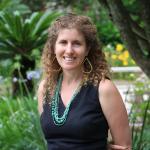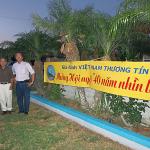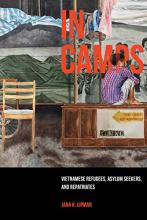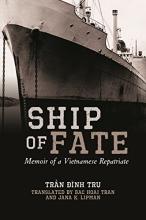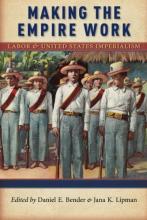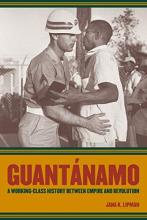Jana K. Lipman
Associate Professor

Areas of Expertise
Biography
I study US foreign relations and immigration history. My current book is a history of Vietnamese refugee camps at the end of the U.S. War in Vietnam. For this project, I have conducted research in the UK, Hong Kong, the Philippines, and Malaysia.
My first book was a history of the US naval base in Guantánamo Bay (GTMO) from the point of view of Cuban base workers. Through extensive field and archival research in Havana, Santiago de Cuba, and Guantánamo, Cuba, I analyzed how Cuban base employees navigated the politics and contradictions of living in Cuba and working for the US military.
My publications also include: Making the Empire Work: Labor and U.S. Imperialism (Co-editor), NYU Press, 2015 and Ship of Fate: A Memoir of a Vietnamese Repatriate by Tran Dinh Tru (Co-translator), University of Hawaii Press, 2017. My work has also appeared in American Quarterly, Immigrants and Minorities, the Journal of Asian American Studies, the Journal of American Ethnic History, the Journal of Military History, Modern American History, and Radical History Review.
I have also advised the Guantánamo Public Memory Project and the Humanities Action Lab (New School).
Education
Yale University
Yale University
Yale University
Brown University
Accomplishments
Newcomb Tulane College Honors Professor of the Year
2019
Tulane School of Liberal Arts April Brayfield Prize for Excellence in Teaching
2015
Constance Rourke Essay Prize
2012
for the best article published in American Quarterly
Newcomb Tulane College Advising Excellence Award
2018
Co-Winner Taft Book Prize in Labor History
2009
Links
Articles
Cuban Revolution in America: Havana and the Making of the United States Left 1968 – 1992
Teishan A. Latner’s Cuban Revolution in America: Havana and the Making of the United States Left, 1968 – 1992 is an excellent new book on left- wing activists, the complex politics of solidarity, and US- Cuban relations. It acts as a worthy sequel to Van Gosse’s classic Where the Boys Are (New York: Verso, 1993), which analyzes the New Left and its identification (and admiration) of the Cuban revolution and the Castro brothers’ masculinity in the 1950s and early 1960s. Latner moves his analysis forward in time and argues that American activists used travel as a way to forge solidarity with the Cuban revolution and that, in turn, the Cuban government capitalized on these friendship brigades as a way to win ideological points in its ongoing public relations war with the United States. “Cuba like all nations, needed allies abroad,” Latner...
Immigrant and Black in Edwidge Danticat's Brother, I'm Dying
The history of Americans' treatment of newcomers has proven especially fraught in the case of black immigrants who remain categorized as part of Black America, a community that, from Frederick Douglass to Black Lives Matter, has consistently had to fight for the rights and recognition of U.S. citizenship.
Cuba's Racial Crucible: The Sexual Economy of Social Identities, 1750–2000
Karen Y. Morrison's Cuba's Racial Crucible: The Sexual Economy of Social Identities, 1750–2000 argues for the centrality of the family in the longue durée of race making in Cuba. Morrison's ambitious project tackles a long chronological scope, starting in the eighteenth century, moving through the illegal slave trade, the Wars of Independence, and emancipation in the nineteenth century, and concluding with the twentieth century and the Cuban Revolution. Morrison argues against an explanation of interracial family formation in Cuba, as being a simple matter of blanqueamiento, or a shared and straightforward project of whitening. Instead, she argues that "this study highlights the inextricable links between 'family,' 'race,' and 'nation' in the competing nationalist visions of Cuba that have existed since the eighteenth century" (xvi).
Children of Reunion: Vietnamese Adoptions and the Politics of Family Migrations
Allison Varzally's Children of Reunion: Vietnamese Adoptions and the Politics of Family Migrations is an excellent contribution to the growing literature on [End Page 130] US-Vietnam relations after 1975 and gender and foreign policy. The book provides a nuanced examination of the fraught politics of adoption, recognizing the competing stories of Vietnamese and US parents and always finding the balance between personal stories and political significance. This book will be read alongside recent works in Critical Refugee Studies, by scholars like Yen Le Espiritu, and in the recent proliferation of books on international adoption, such as Catherine Ceniza Choy's Global Families: A History of Asian International Adoption and Laura Briggs' Somebody's Children: The Politics of Transracial and Transnational Adoption.
Review: The Invisible Citizens of Hong Kong: Art and Stories of Vietnamese Boatpeople by Sophia Suk-Mun Law
Sophia Suk-Mun Law’s The Invisible Citizens of Hong Kong: Art and Stories of Vietnamese Boatpeople showcases the artwork of Vietnamese boat people who were held in detention camps from through. Her book offers a valuable overview of Hong Kong’s history with Vietnamese boat people, as Hong Kong’s policy transitioned from one of hospitality and open camps to one of “humane deterrence,” and ultimately to one of detention and forced repatriation. Law’s goal is to narrate this story while highlighting the artistic expression of Vietnamese in the camps. Law’s book is divided into two distinct sections. The first section provides a thorough synopsis of Hong Kong’s history with Vietnamese boat people from through the s. Much of this work is drawn from secondary sources, particularly John Chr. Knudsen and Linda Hitchcox’s work from the early s. The first three chapters outline the …
Media Appearances
5 things to know about Guantanamo Bay on its 115th birthday
The naval base at Guantanamo Bay is quietly commemorating its 115th anniversary. On Dec. 10, 1903, the United States established its first overseas military base on 45 square miles of Cuban territory.
Agricultural Labor Since 1930 and Organic Farming
Tulane University professor Jana Lipman taught a class on agricultural labor in the United States since 1930 and the rise of organic farming. She described the “bracero” program which brought temporary workers from Mexico in the 1940s and 50s, as well as farm workers strikes under leaders such as César Chávez. She argued that despite the rise in consumer awareness relating to organic food, worker conditions are not always considered a factor in what people buy.
The South Vietnamese who fled the fall of Saigon – and those who returned
More than 120,000 people fled Vietnam after the North Vietnamese captured Saigon on April 30, 1975. This chaotic evacuation has been captured in iconic photos, documentary films and oral histories. How did the Vietnamese seeking safety actually get from small boats or rooftop helicopters to the United States?
40 Years Ago, Arkansas Military Base Became Refugee Camp
Jana Lipman, associate professor of history at Tulane University notes that in coverage of the resettlement process, many photographs in local and national media displayed the refugee children. She says the photographs conjured a symbolic importance for domestic audiences at the end of the long and sometimes horrendous conflict.
